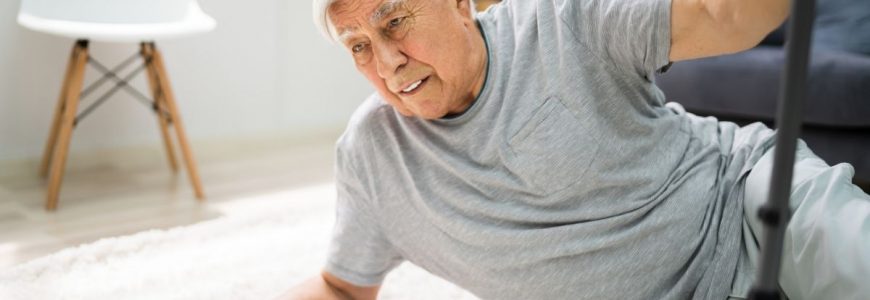Reducing the risk of falls for people with glaucoma involves a number of different strategies. These include prompt diagnosis and treatment, regular testing and a multi-disciplinary approach to care, in order to initiate changes to help with lifestyle modification.
The aim throughout should be to reduce the risk of the patient falling while ensuring that they are still able to lead as full and independent a life as possible. In this article, Gurjeet Jutley looks at some of the key fall risks for people with sight loss caused by glaucoma.
Fall risks for people with sight loss
The onset of sight loss caused by glaucoma can increase the risk of falls in and outside of the home. Studies have suggested the most common place patients are likely to fall is the bathroom and the garden. Alarmingly, patients are more likely to fall in their own homes as opposed to inside other buildings. Depending on the visual field deficit, specific risk areas to be wary off are:
Stairs
A significant number of falls happen when an individual is using the stairs. Double handrails can help reduce the risk of failing, as well as extending handrails beyond the steps at the top and bottom of the stairs.
High cupboards
Don’t store things that might be used regularly in high places and that might require the use of steps to reach. Individuals standing on chairs to reach items in high cupboards frequently cause falls, with the risk substantially worse with sight impairment.
Furniture
Trips and falls caused by furniture are commonplace for people with sight loss. Furniture should be arranged in the home so there is a clear path for walking with clutter kept out of walkways. Furniture on wheels should be avoided.
Good lighting
This is the single biggest intervention that should be implemented in order to minimise the risk of falls in patients with glaucoma. All parts of the home should be well lit to help improve visibility. This is particularly important around staircases, passageways and steps in and out of the property.
Flooring
A study in the AJO revealed that patients with glaucoma who fall, the risk of causing damage to the body is not related to the extent of visual field damage, rather to the type of flooring and the co-morbidities. Hence a consideration to tend away from hard flooring to carpet is sensible.
Clothing
Loose-fitting and trailing clothes can be a trip hazard. So too can walking on slippery floors in socks, tights or smooth-soled slippers. Always try to wear well-fitting shoes that support the ankle and are in good condition.
Walking
When walking in an environment outside the home there are all kinds of unseen hazards. Walking aids such as walking poles can help stay active for longer.
Strength and balance
All potential exercise programs should consider the degree of sight. It’s counterproductive to increase the risk of falling during exercise, so all programs must be tailored individuals. Tai Chi in particular has been shown to reduce the risk of falls while being low impact, placing the emphasis on balance, movement and coordination.
Stay healthy
Good overall physical health can help reduce the risk of falls regardless of the degree of sight loss. Someone with significant sight loss who is physically healthy is less likely to experience a fall than someone who is unhealthy. In practical terms, this means keeping active, avoiding alcohol and other intoxicants, and trying to have a healthy diet.
This blog is contributed by Gurjeet Jutley – Consultant Ophthalmologist, Oxford.

